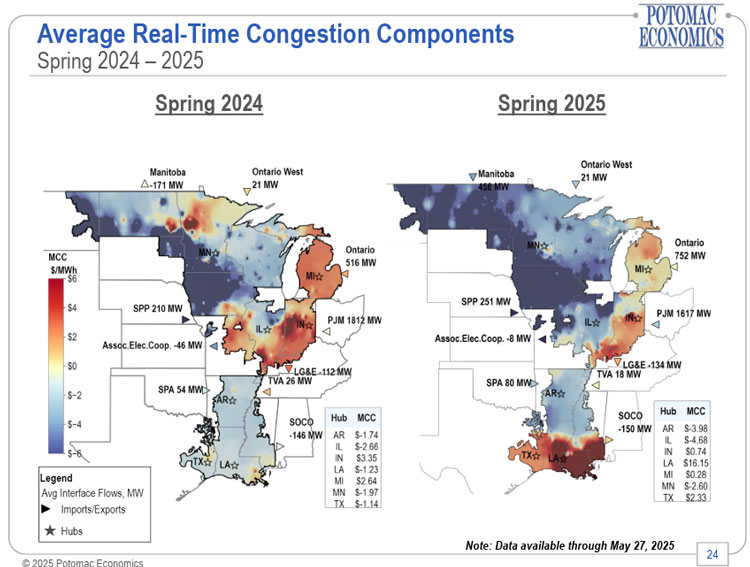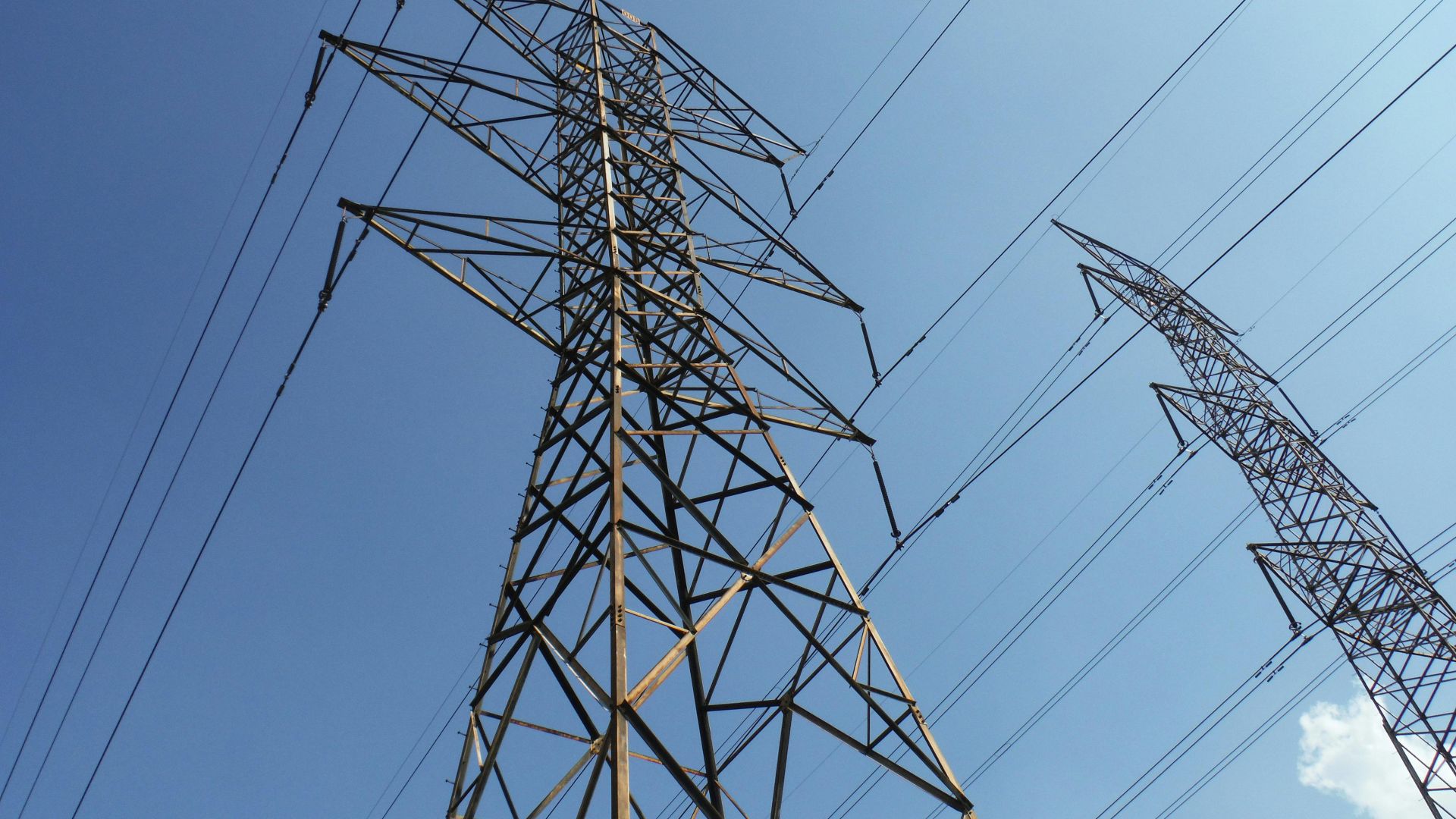This spring, Louisiana experienced two catastrophic, but preventable, grid failures: One in Shreveport in April, and another in New Orleans in May. These weren’t freak storms or once-in-a-generation disasters. They were the result of outdated planning rules, political inertia, and a system that seems more focused on maintaining process than preventing blackouts.
While families in Louisiana lost power and communities bore the brunt of reliability failures, Federal Energy Regulatory Commission (FERC) denied a simple, common-sense waiver that could have enabled better coordination and more meaningful planning between MISO and SPP.
FERC fiddles while Louisiana burns.
Two Blackouts, One Common Problem: A Weak Transmission Seam
Shreveport in April faced two major planned outages and simultaneous generator outages. The result: transmission constraints and load shed (power outages). In May, the Amite South pocket—including Entergy New Orleans and Cleco territory—lost over 6,000 MW of generation with inadequate transmission import capacity. Another emergency. Another round of load shed. Two different grids.
Both problems were worsened by the same issue: inadequate interregional transmission between MISO and SPP. And both point squarely to the failure of the current MISO-SPP Coordinated System Plan (CSP) process, which, despite years of studies, have never produced a single major interregional project.

What the CSP Is Supposed to Fix
The CSP exists to identify transmission projects that provide benefits to both MISO and SPP, effectively stitching together the two regions in a way that saves consumers money, and increases reliability. But current rules only allow CSP projects that displace existing regional project plans. The result? High-impact projects that could improve flows, reduce constraints, and reduce costs are tossed aside because they don’t measure the value of stopping blackouts. Under current rules, the message is clear - blackouts are better than building transmission.
This problem isn’t hypothetical or acute. It’s systemic. In its recent report, the North American Electric Reliability Corporation (NERC) found that transfer capability between MISO and SPP is inadequate when the grids are stressed, and that there are prudent additions in transfer capability that can be made to benefit both regions. Currently though, the infrastructure isn’t built to support real-world reliability needs.
Louisiana paid the price in April and May. We know the problem. We know the solution. What’s stopping progress?
Over regulation.
MISO and SPP Tried to Modernize. FERC Said No.
In January, MISO and SPP filed a waiver request with FERC to make the 2024–2025 CSP process more useful. The proposal was simple: use a unified 10-year model, evaluate projects based on a broader range of benefits, and provide better data for joint planning. These common sense reforms garnered support from stakeholders and state commissions alike.
But instead, FERC denied the request, claiming the waiver wasn’t “limited in scope” and that the issue wasn’t “concrete” enough. MISO and SPP were directed to file a much more cumbersome request. The rejection forces MISO and SPP back into fragmented modeling and inefficient scenario-building. Now, we will have to wait even longer while MISO and SPP try to thread FERC’s narrow regulatory needle.
It also ignores the urgent reliability lessons Louisiana has already learned the hard way. With this rejection, it became clear that FERC doesn’t consider power outages in Louisiana to be concrete enough justifications for fixing the transmission system.
We’ll Pay Either Way
Let’s be honest: we’re going to pay for the grid whether we like it or not. The only question is whether we pay proactively—by building transmission that improves reliability and lowers costs—or reactively—by absorbing the economic and human toll of repeated blackouts. There is no "free" option.
The congestion bill for one week in May topped $100 million in MISO South alone. That’s money Louisiana ratepayers are already shelling out. And it won’t build a single new line unless the rules change.
Cost Allocation: The Elephant in the Room
Transmission planning doesn’t fail because we don’t know what to build. It fails because we can’t agree who pays. That’s where cost allocation reform comes in.
A practical solution already exists. SPP’s Highway/Byway method spreads the cost of high-voltage lines across the entire region. Arkansas, Louisiana, and Texas already support this method inside SPP. It could be adopted in MISO South as part of Order 1920 compliance or CSP reform. Doing so would align the region around a proven, fair cost-sharing approach and remove one of the biggest barriers to progress.
But there’s a catch: Louisiana Public Service Commission (LPSC) consultants have repeatedly opposed cost allocation changes that would enable transmission investment—even after the recent outages. At SPP’s most recent Cost Allocation Working Group, Louisiana voted against an updated cost allocation policy for targeted economic efficiency transmission projects, while no other state opposed the reform.
We don’t just have a federal problem. We have a state problem too.
Leaving MISO and SPP? That’ll Make Matters Worse.
Incredibly, instead of addressing transmission bottlenecks, one regulator is floating a more radical idea: leaving MISO and SPP altogether. A recent op-ed suggested Louisiana should "break free" and rely on the Southeast Energy Exchange Market (SEEM), an algorithm in the southeast. MISO and SPP have the ability to work together to resolve transmission problems, if they’re allowed to. SEEM has no oversight on transmission planning, no governance over cost allocation, and has shut down when the grid is stressed. Exiting regional transmission organizations for SEEM would decimate cost savings while reducing reliability.
Next Steps: Reform, Not Retreat
It’s time for real leadership, not resignation. The grid will only grow more stressed as extreme weather, electrification, and data center loads accelerate. It’s cheaper to build transmission than for ratepayers to individually buy generators or batteries for their homes. We can either meet that challenge head-on or wait for the next load shed event to remind us what we failed to build.
Fiddling won’t fix the grid. It’s time to build.
Sign up for SREA’s distribution list to keep up to date on all the energy related activities in the southeast!


